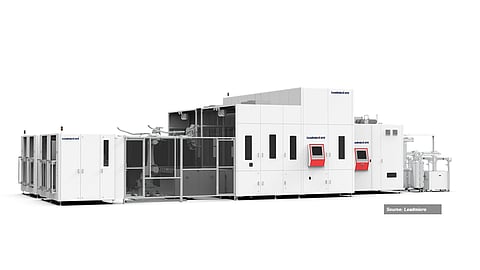

ALD remains a key technology for high-quality AlOx passivation in both PERC and TOPCon solar cells
Leadmicro’s KF20000S ALD system uses a 4-tube thermal reactor design, processing up to 3,360 M10 wafers per tube
Compact equipment design and independent tube operation simplify maintenance and integration in high-volume production
Aluminum oxide was adopted into solar cell processing with PERC, but the dielectric has an even more crucial role to play in TOPCon, as it becomes the emitter passivation layer. Whether it be PERC or TOPCon, ALD and PECVD are the 2 mainstream methods for aluminum oxide deposition. ALD systems, however, were the first to facilitate the deposition of aluminum oxide for PV. The fundamentals of ALD can be found in our earlier PERC reports, e.g., PERC Solar Cell Technology 2017 Edition. ALD reactors function on the principle that alternate dosing of the precursor, which is trimethyl aluminum (TMA) and water vapor serving as oxidant, is accomplished in the same reactor chamber. While a few companies did tweak this fundamental principle by making it spatial and truly inline, they are currently commercially inactive, at least for this application.
Leadmicro has played a pivotal role in facilitating PERC’s entry into high-volume production. Its ALD solution is both low-cost and high-throughput. One of the main obstacles for batch ALD was wraparound on the front, similar to LPCVD in TOPCon. However, depositing ALD on top of the front SiNx layer has alleviated any risk of forming inversion layers. Leadmicro has switched to ozone, replacing water as an oxidant, making the process more effective as a result. The industry has received the technology very well.
For this survey, Leadmicro has provided updated specs for its KF20000S system. This 8th-generation KF Series ALD system is a thermal, time-based reactor with 4 tubes housed in a common shell. Each tube can process up to 3,360 M10 wafers in a back-to-back loading configuration, resulting in a total throughput of over 22,000 wafers per hour. The system maintains compatibility with older PERC lines and features a reduced equipment height of 3.8 m, along with independent tube operation to facilitate maintenance.
